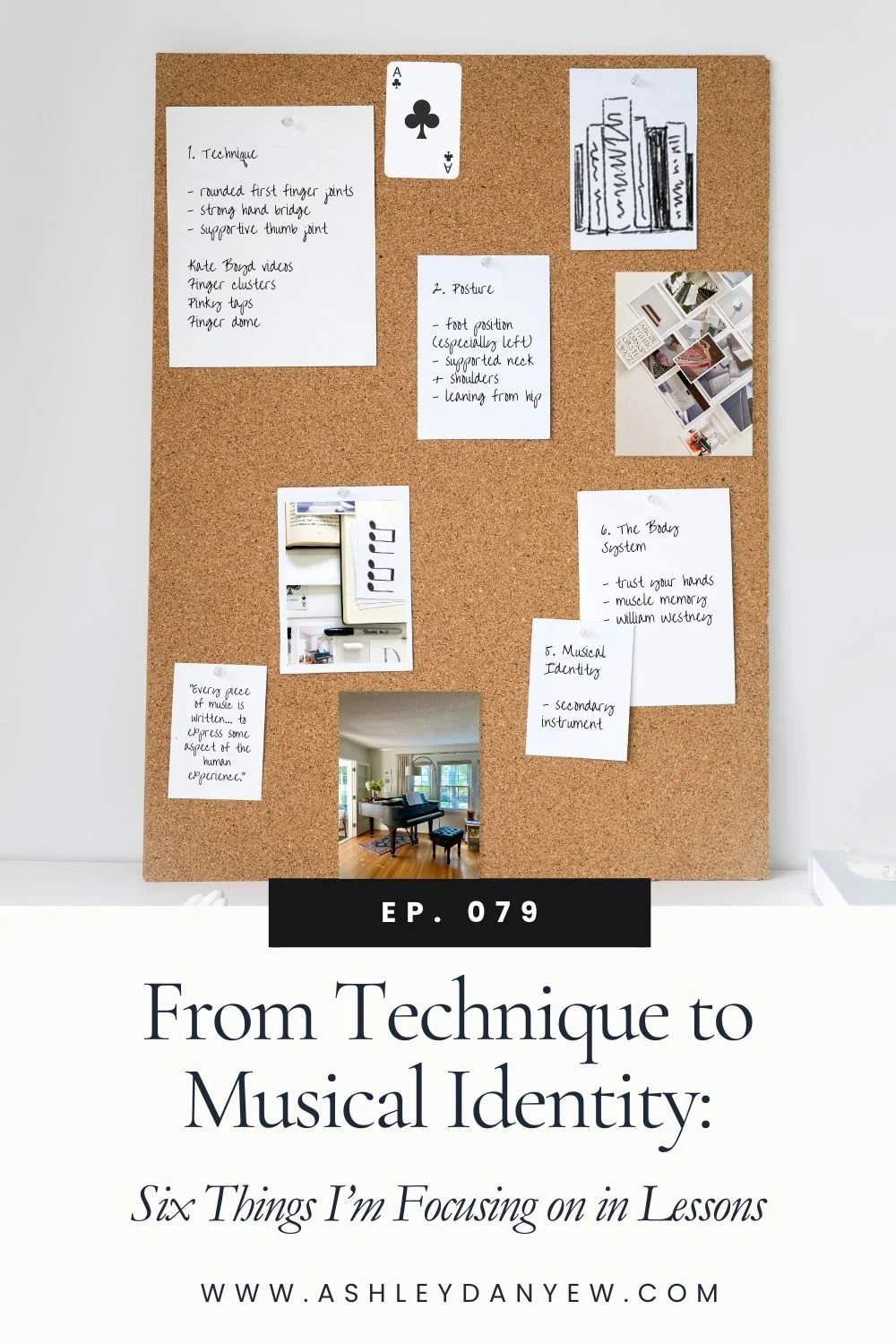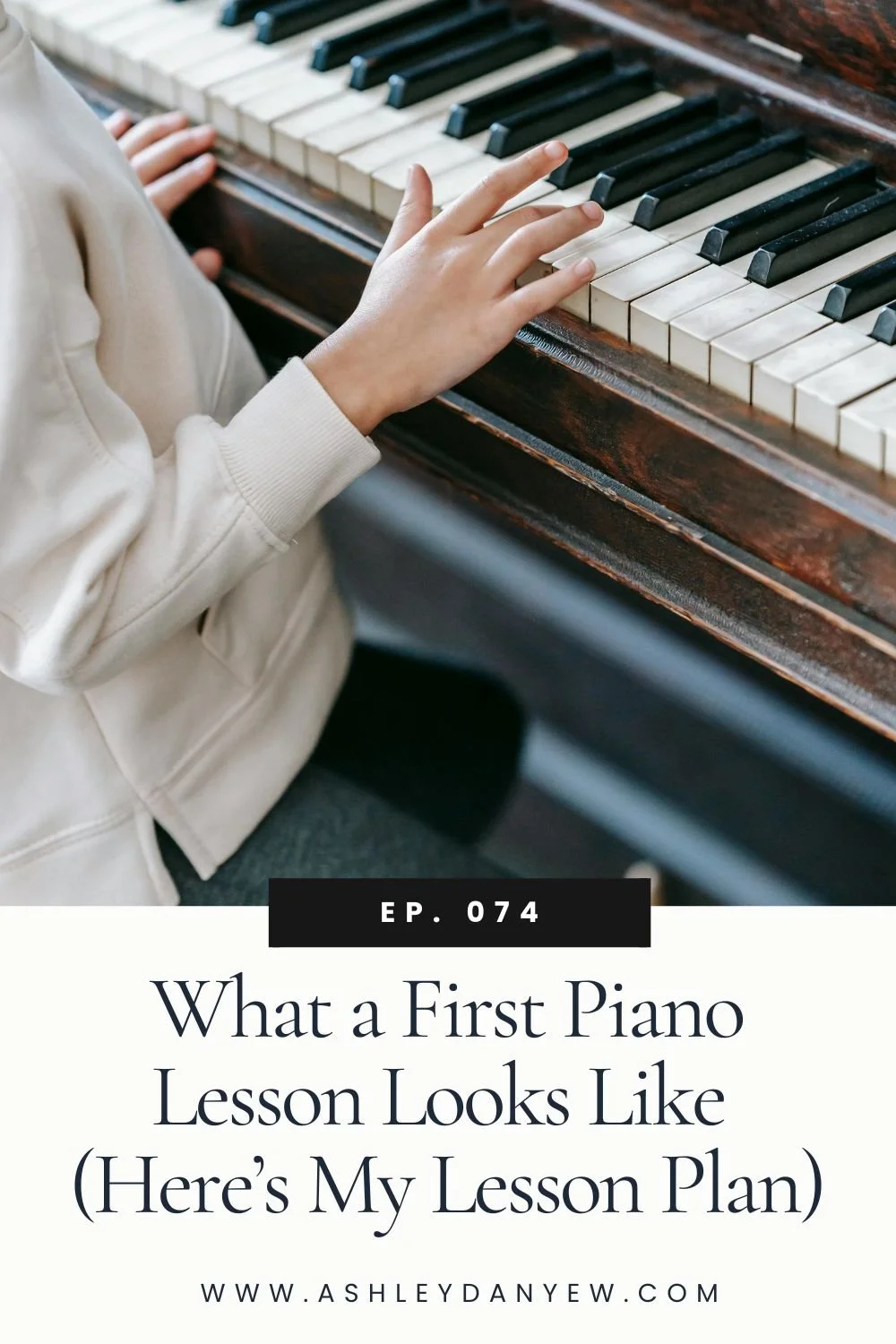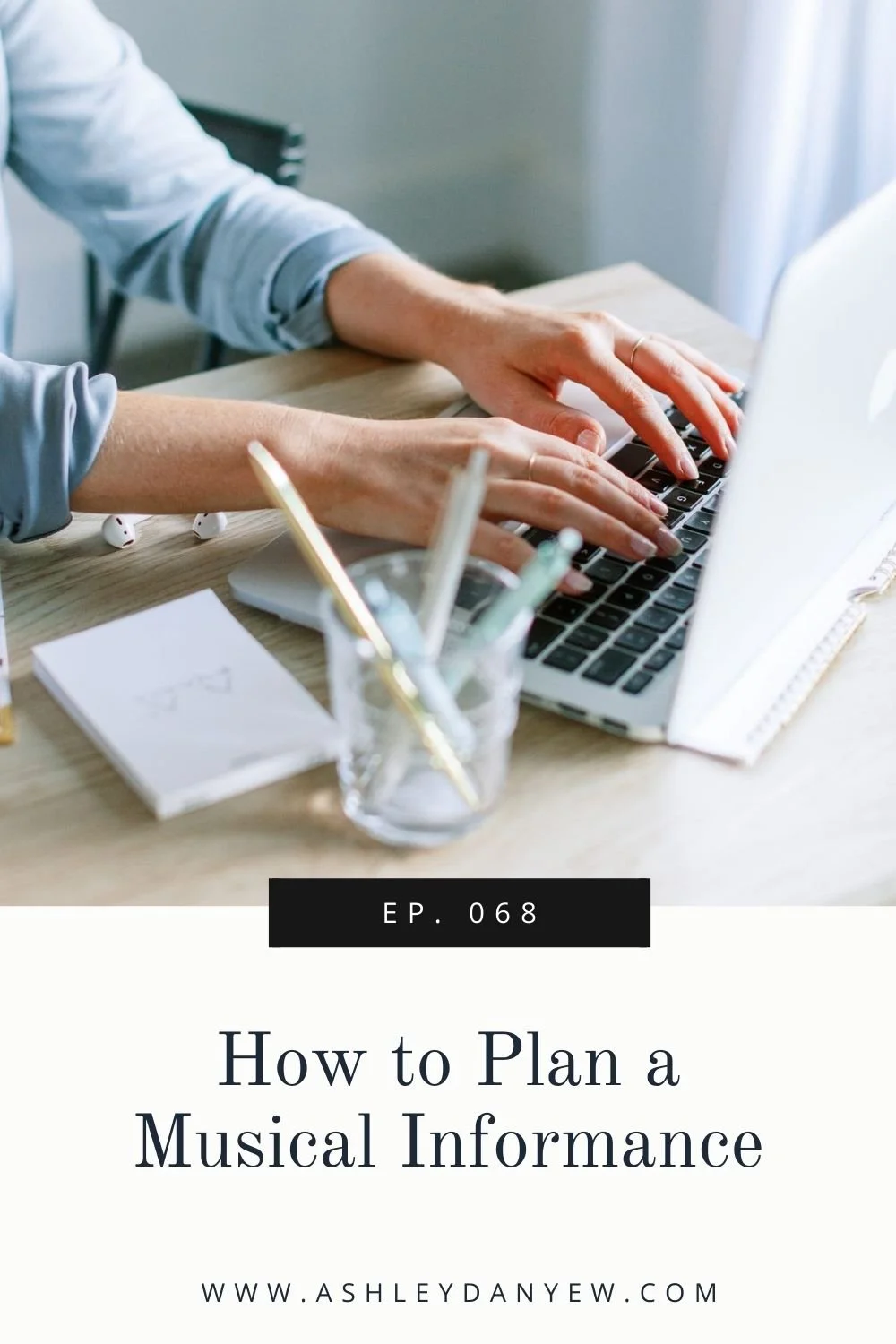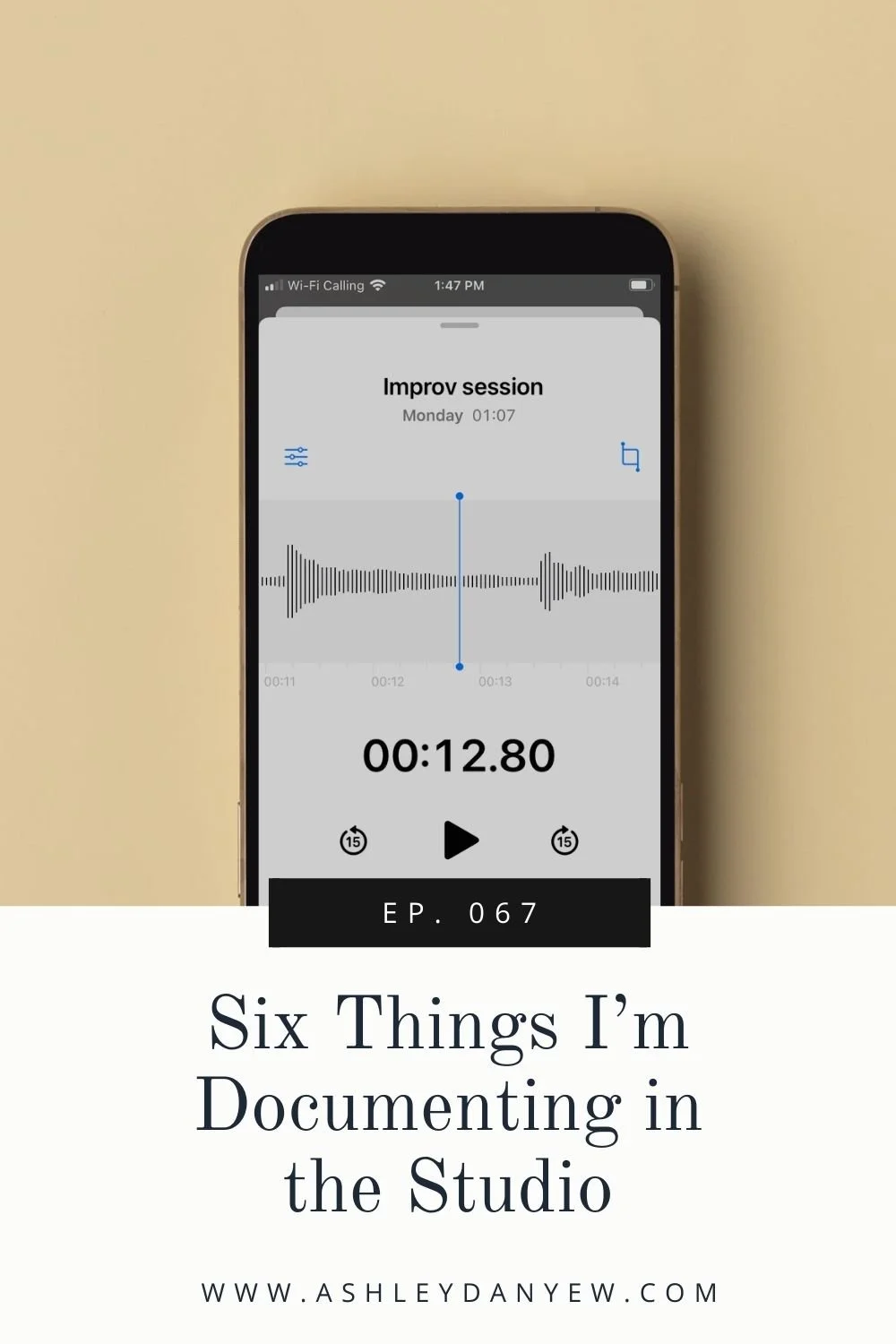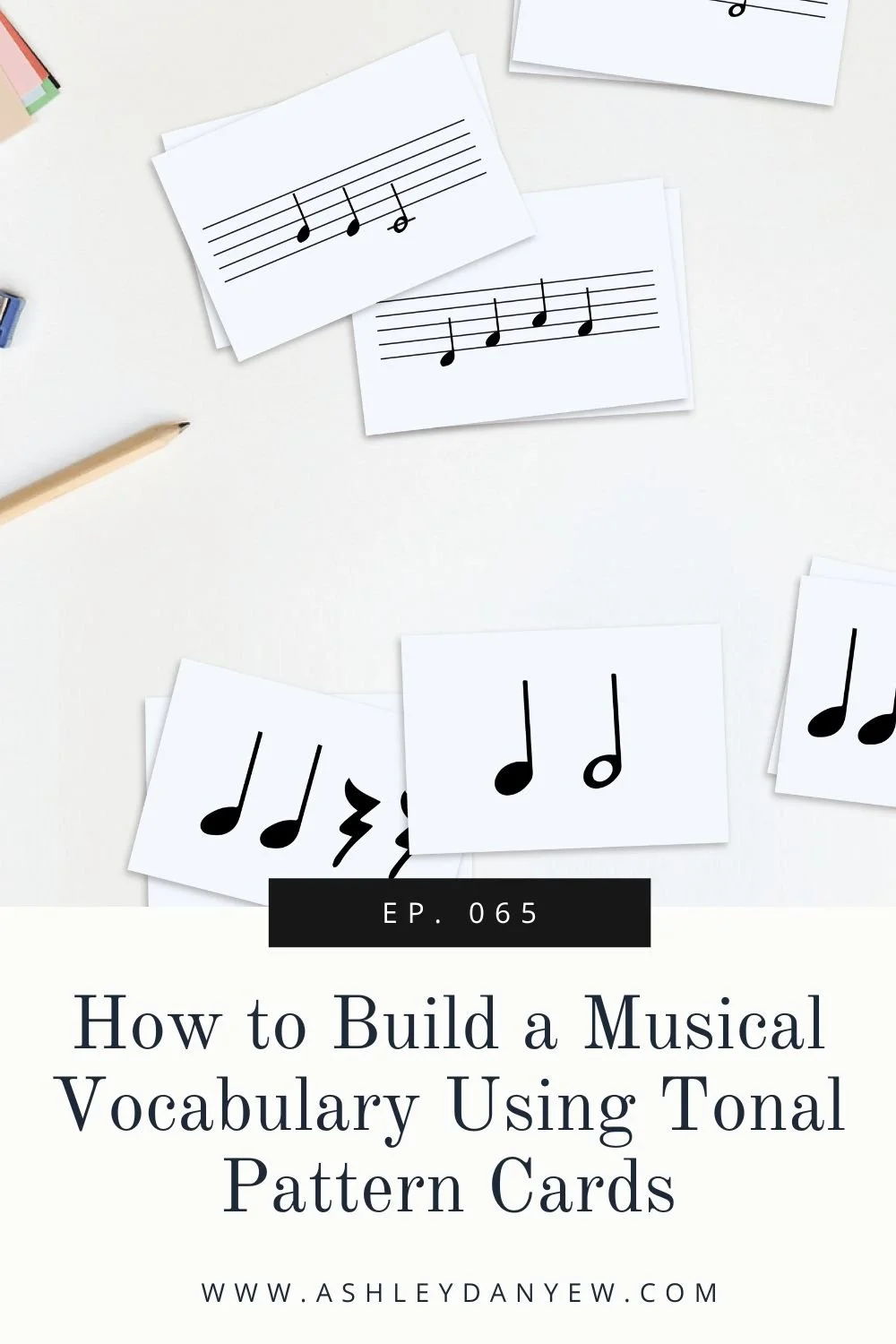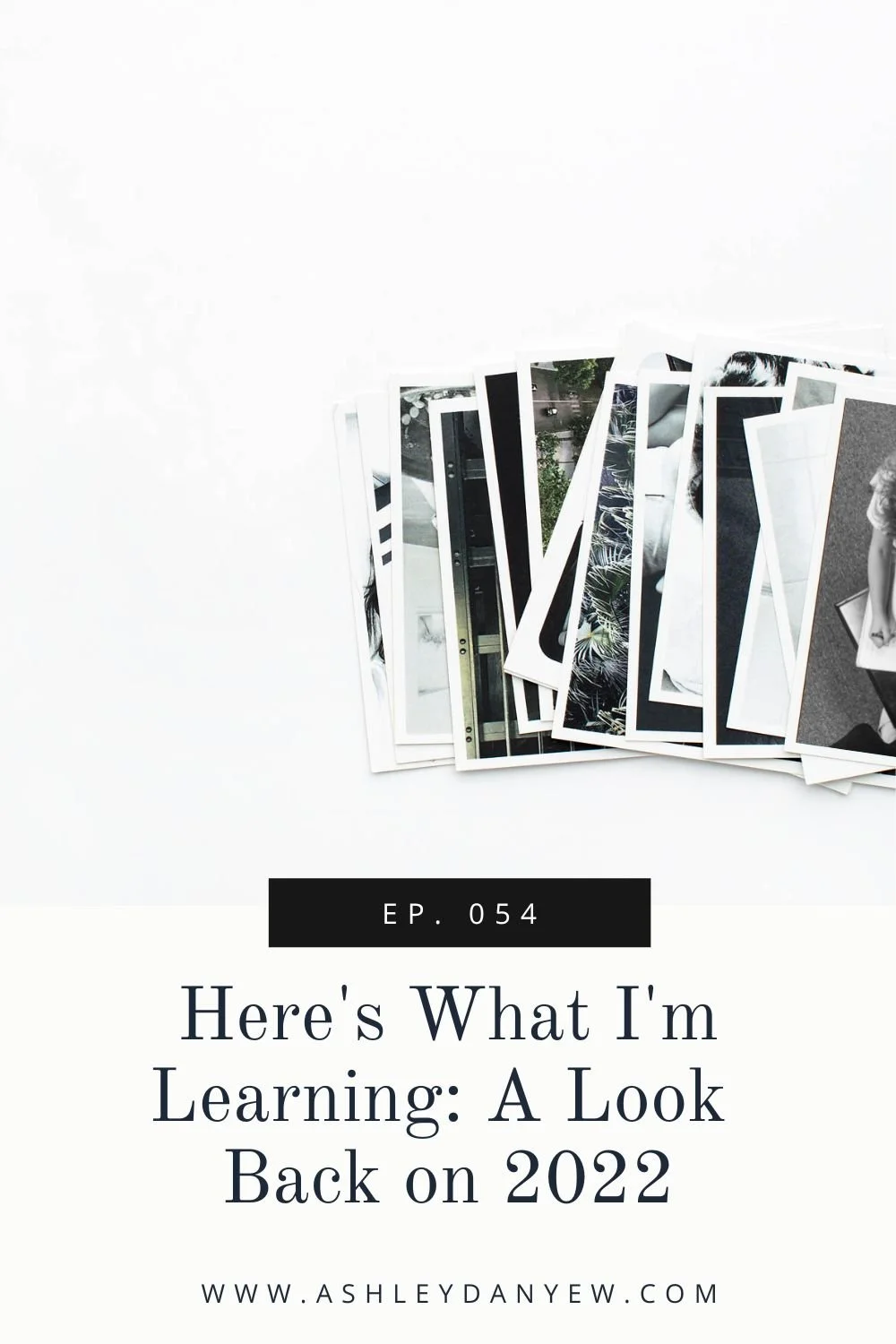Resources Mentioned
*Disclosure: I get commissions for purchases made through some of these links.
Songs Without Words by Felix Mendelssohn
Sight-Reading and Rhythm Every Day series by Helen Marlais
4 Reasons Why Playing Your Instrument for Fun is Vital to Your Music Career
Pulse app - a metronome for your phone
3 Tips for Playing Open Score (for Choral Accompanists Everywhere)
The Church Musician Primer - a 4-week online keyboard skills class
We're about six weeks into the school year now, and I’m finally starting to settle into my new routine.
This year, I’m teaching about 20 hours a week, 2nd grade to 11th grade (plus one adult!). I spent a lot of time this summer learning new repertoire, evaluating sight-reading materials, and writing a new keyboard theory curriculum for my older students.
I love this work and I love getting back on the bench myself, both to play familiar pieces I studied in college and grad school and discover new works, but all of this requires something we never seem to have enough time for as professional musicians—practicing.
I don’t know about you, but as a student, I had anywhere from 2-6 hours a day to practice. It’s hard to remember what that life was like, isn’t it? Though that was certainly intense, I now recognize how much that time was a luxury.
As professional musicians, we gig (under normal, non-COVID circumstances), we teach, we play, we write, we email (so many emails!), we manage, we coordinate, we learn. When is there time to practice?
Related episode: Ep. 007: Let’s Start at the Very Beginning
We know that practicing is important to our work as professional musicians, even if we aren’t performers. Staying connected to your instrument helps keep your musicianship skills sharp—your aural awareness and reading abilities, your commitment to a beautiful tone and balance and expression. It helps you stay in shape technically, whether that’s keeping your fingers in shape, maintaining good breath support and airflow, or keeping a healthy, strong embouchure.
Playing your instrument makes you a better teacher, too, because you’re in it—you know what practicing requires and you know how to pick and choose the strategies that will help you be most efficient with your time.
All this to say, you don’t need to practice 2-6 hours a day like maybe you did in college. But practicing a few times during the week is a great way to stay connected to the art of music-making and maintain a high level of technique and musicianship.
With that said, here are a handful of quick tips for practicing efficiently in 30 minutes or less:
*Disclosure: I get commissions for purchases made through links in this post.
Practice Tips for Busy Music Teachers
My first practicing tip is this:
15 minutes is enough time to make progress.
Most of the things I'm practicing these days are short, 3- to 5-minute pieces. While 15 minutes might not seem like much time, you can make progress on 1-2 short pieces with focused, diligent practicing. If you’re working on a longer work, where can you focus your time and energy for 15 minutes? Choose a section or part of a movement and dive deep.
Where do you have 15 minutes in your day or week where you could squeeze in a mini practice session?
Always mark your music as you go.
I keep a pencil (or three) on the music rack at all times so I can mark things as I go. I advise my students to do the same. Better to mark in a finger number or an accidental now than make the same mistake tomorrow (and again the next day).
Things I tend to mark in my scores:
fingering
phrasing/breath marks
dynamics (especially if only the abbreviation for crescendo or decrescendo appears—sometimes I like the reminder of the symbol).
notes I want to bring out or lead to within a phrase or notes I want to voice in a blocked chord
It’s so helpful to have these reminders marked in the next time I sit down to practice.
Eliminate distractions.
Find the times of day when your house is quiet and you can practice without interruptions or distractions (e.g. the dog wanting to go outside to chase the chipmunks. Surely that doesn’t happen only to me!).
The other biggest distraction for me is my phone. I use the Pulse app sometimes to check tempo markings, but otherwise, I try to leave my phone out of reach. No email or text messages, no notifications, and definitely no social media.
We’re here to work!
Keep going.
As tempting as it may be to go back and fix every little thing on the first or second reading, I find it can be helpful to sightread all the way through a piece the first few times I sit down to play it, without getting into all the details.
This helps me get a sense of the piece as a whole before breaking it into parts.
In subsequent practice sessions, I’ll do slow-practice, work out a fingering, rehearse a technical passage, or listen critically for balance and phrasing. But in the beginning, sometimes, it’s best to just keep going.
This, after all, is a useful skill in and of itself, as we don’t always have the luxury of practicing and preparing a new piece. This practice helps us learn the valuable skill of reading and capturing as much information off the page as we can without taking time to prepare and study it.
Next, rehearse the parts.
This is both literal and figurative. First, the figurative.
Here, “parts” refer to the individual musical components of a piece: rhythm, melody, harmony, and expression. This is where you get into the detail work.
Work one section at a time, one line at a time, one phrase a time to refine your fingering, phrasing, or tone color, to shape dynamics or increase tempo. Tap and count the rhythm of a challenging phrase. Block the harmonies of a fast technical section.
Sometimes detail work looks like practicing over a barline or rehearsing one particular measure that has a complex element. Practice it slowly, aim for a certain number of accurate repetitions, and then put it back in context.
All of this should only take a few minutes, but the result is successfully working through a trouble spot that will hopefully save you time the next time you sit down to practice.
And of course, sometimes in music we have literal parts to practice.
For example, if you’re a choral accompanist, a lot of your time is spent playing voice parts—both one at a time and in various combinations. Take a few minutes to rehearse these parts at home (especially if they’re open score!).
When I was accompanying choral groups, this always helped me feel a little more prepared and put together in rehearsal. I also felt like this gave me a better sense of the piece as a whole.
Don't spend time on things you already know.
This is what we tell our students, right? “Practice things that need practicing.”
We all know how valuable uninterrupted practice time is, so when you have a few minutes, spend it on the pieces that actually need practice. Unless of course everything you’re playing is for fun! But still, challenge yourself to sightread something new or play something by ear. Create a chord progression in a particular key or transpose something you know well up or down a half step.
If you have a piece you’re preparing for performance of some kind, focus on the steps you need to take in this particular practice session to move the needle. What will help you refine and polish this piece? Often this means skipping the easy parts and jumping right into the harder sections.
Finally, practice what you preach.
I’ve hinted at this already a few times, but I often hear my own teacher voice in my head when I’m practicing:
“What’s the best way to approach this tricky section?”
“Which fingering do you prefer for that line?”
“What’s the most important note in this phrase?”
Does that happen to anyone else or is it just me?
If you’re a music teacher, you likely have a whole collection of practice strategies at the ready to share with your students. I tell my students this is adding tools to their practicing toolbox and it will serve them well for years to come.
What tools or strategies do we use in our practice sessions? How do we approach a difficult rhythm or technical section? Do we gloss over it or do we buckle down and do the hard work of figuring it out and practicing it in an intentional, systematic way?
Some of the strategies I recommend to my students are things like, “Practice this practice spot until you can play it correctly three times in a row.” How often do I do that in my own practicing?
Or, if we encounter a challenging rhythm or have a coordination issue between hands, my first instinct is to recommend that we stop and tap and count that phrase hands together. How often do I use this strategy in my own practice sessions?
Sometimes I feel like the short amount of time I have to practice is not enough for practicing strategies like these. But the truth is, my time would probably be better spent focusing on 1-2 things and employing a strategy or two that would help me achieve success rather than trying to run through everything on my list.
Can you relate?
If so, I have something that might be helpful to you.
A few years ago, I created a 4-week online keyboard skills class called The Church Musician Primer. It’s designed specifically for pianists and organists who are playing in church settings and I’m excited to take another group of students through the program this fall!
Packed with practical tips and strategies straight from the field, you'll develop valuable sight-reading, score-reading, and harmonizing skills; learn effective strategies for playing and accompanying hymns, anthems, and contemporary songs creatively and confidently; and get the tools and resources you need to lead and support choral and congregational singing in a variety of settings.
You’ll learn how to:
develop skills in sight-reading and score-reading;
develop critical listening skills by evaluating music aurally and working without notation;
foster basic accompanying skills by learning to simplify and knowing what to leave out;
build coordination: play/sing, play/conduct;
harmonize simple melodies (with and without chord symbols); and
develop creativity through composition and improvisation activities.
Plus, I’ll share some of my favorite practicing strategies, accompanying ideas, and resource links (past students say this is one of their favorite things about the course!).
Closing
In closing, I want to say that practicing can be fun!
Give yourself some flexibility and room to explore, create, and play music that you enjoy. Use this time to stay connected to live music, to be inspired, to learn new things, and to continue polishing your musicianship skills—whatever that might look like for you.
I’d love to hear from you:
What are your tips and tricks for practicing, especially practicing efficiently in short amounts of time?
More reading:
Efficient Piano Practice: 10 Expert Tips
A Better Way to Practice
Efficient Practicing for the Time-Crunched
Deliberate Practice: What It Is and Why You Need It







